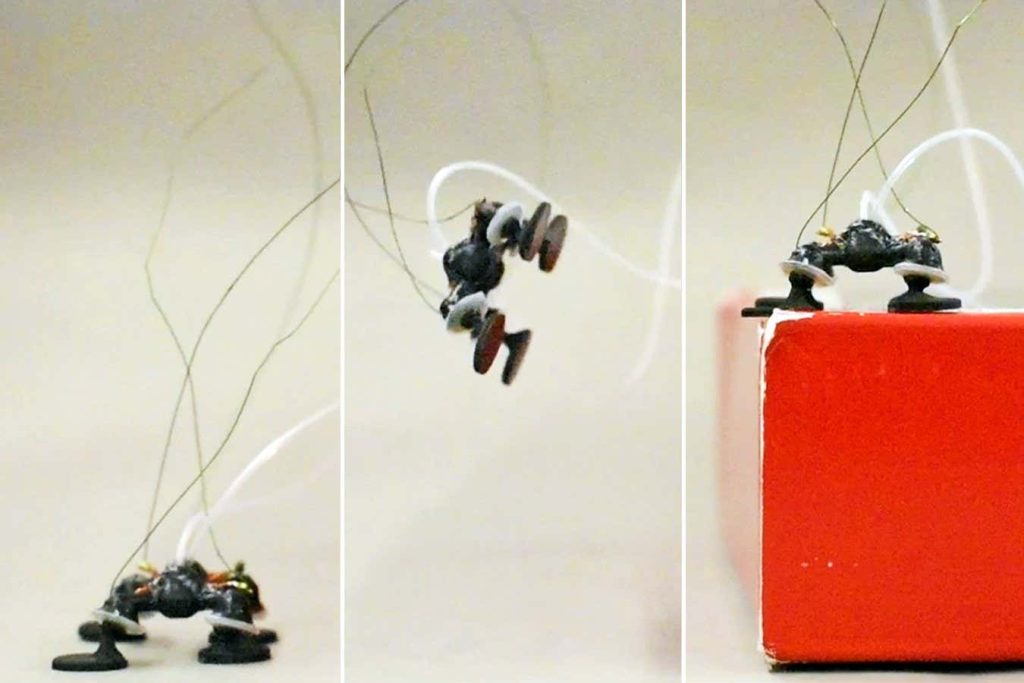A robot powered by tiny explosions can jump 20 times its own length and carry 22 times its own weight. Its makers say it could be produced cheaply in bulk and is ideal for search-and-rescue missions or even exploring other planets.
Most robots are powered by electric motors and batteries, which are reliable, tried-and-tested technologies, but can’t be miniaturised past a certain point. Robert Shepherd at Cornell University in New York and his colleagues have turned instead methane, a chemical fuel that can store energy at a much higher density than lithium-ion batteries and be scaled down to tiny insect-sized devices.
The team created an actuator with a 3D-printed combustion chamber that weighs just 325 milligrams. A pair of electrodes create a spark and ignite a mix of methane and oxygen, and the resulting explosion pushes against a flexible membrane with 9.5 newtons of force.
Advertisement
The membrane rapidly expands outwards during each explosion, but safely contains the gases, which are then vented as it contracts. The actuator can create up to 100 such explosions every second and, at lower frequencies, one of the actuators survived an 8.5-hour durability test, during which it withstood 750,000 successful firings.
Next, the team created a four-legged prototype robot equipped with two of these combustion chambers, each linked to a pair of expanding membranes attached to one foot. Fuel was supplied remotely via thin pipes. The tests found the robot was capable of moving 22 times its own weight, showing that it could operate with onboard fuel in the future.
The 29-millimetre-long, 1.6-gram robot can jump to a height of 56 centimetres and hop forwards 16 centimetres. It can also crawl or hop along a variety of surfaces at speeds of up to of 16.9 centimetres per second by rapidly triggering its actuators, and steer in either direction by triggering only one combustion chamber at a time.
The team says being able to create lots of force quickly on a tiny scale means that these actuators might be useful not just in robotics, but also in automated laboratory equipment and pumps. But Shepherd warns that there is one important downside to powering robots with explosions: loud noises.
“There are lots of places that this would be useful that wouldn’t be right next to a person,” he says. “I do actually think this would be a solution to search and rescue, and operations in austere and remote environments like space, like underwater. Helping people in hospitals? I would say probably not.”
Topics:

